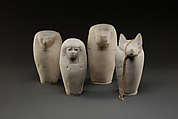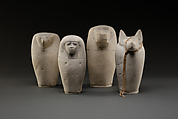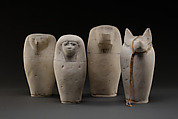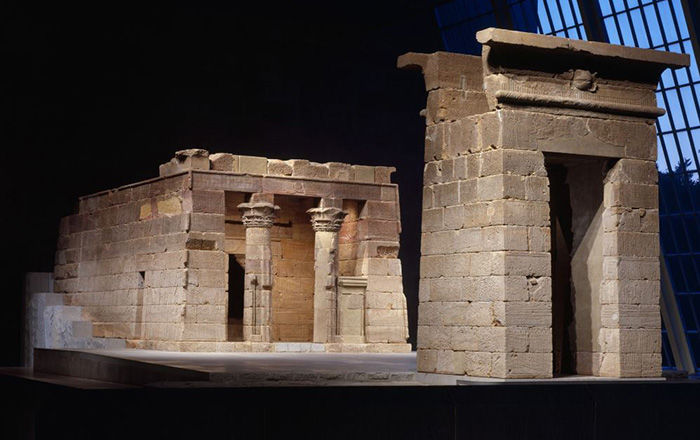Dummy Canopic Jar with the Head of Hapy
Third Intermediate Period
Lying scattered beside Ankhshepenwepet's coffin were four dummy canopic jars made of solid limestone, with crudely-carved features. Their "tops" are indicated by rough black lines, and additional black paint has been used to enhance the faces of the deities.
In earlier periods, the viscera (lungs, liver, stomach, and intestines) were removed from the body and separately mummified, then placed in high-shouldered jars now known as canopic jars. The earliest examples have simple tops, but by the Middle Kingdom, the stoppers were in the form of human heads. Later examples have the heads of the four "canopic" deities who protected and embodied these parts of the mummy: Hapy (baboon-headed, lungs); Duamutef (jackal-headed, stomach); Qebehsenuef (hawk-headed, intestines); and Imseti (human-headed, liver). By the 25th Dynasty, the organs were typically preserved, wrapped, and returned to the body, so there was no longer a need for actual jars. However, since such vessels had been a standard part of the funerarly equipment for thousands of years (since about 2500 B.C.), dummy jars such as these might be included instead.
This jar represents the baboon-headed Hapy. He has been given large human ears and a festival necklace in black paint.
This image cannot be enlarged, viewed at full screen, or downloaded.
This artwork is meant to be viewed from right to left. Scroll left to view more.









